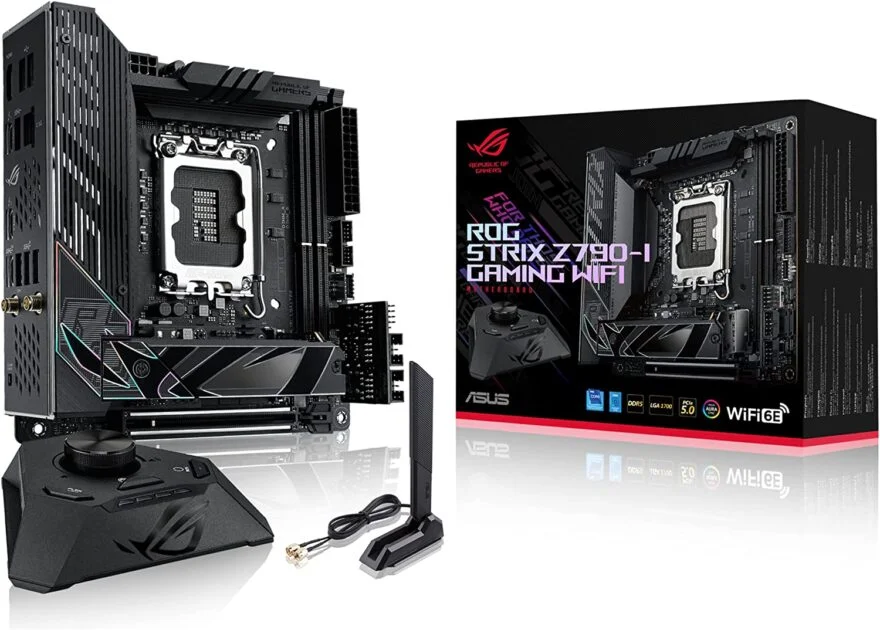Gigabyte P67A-UD7 Motherboard Review
A Closer Look
The board is one of the first to feature the new sexy styling in black from Gigabyte and includes the same colour scheme as seen on the box earlier on. This all adds to the slick, extreme feel that this board has and shows that it’s more of a high-end board than others on the market.
It uses the ATX form factor design and the overall layout is nicely spread out with connectors and buttons in the usual locations.
The CPU socket includes support for Intel i7, i5 and i3 processors from the LGA1155 range of Intel processors and will not accept 1156 processors.
The general layout of the socket from first glance does look very similar to the 1156 socket, and includes the same mechanism for locking down the processor, but the pin layout is slightly different.
The board features four memory slots, supporting upto 16GB of memory in dual channel mode. Memory speeds are supported upto 2133MHz and also include Extreme Memory Profile (XMP) based modules.
The cooling on the board is 100% passive and is all linked together using heatpipes. All heatsinks on the board follow the dark colour scheme and include gold accents on the end. Some of the cooling also pimps the features off. The phases are covered by the cooling which incorporates the number 7 to denote that this board is part of the UD7 range of boards.
The cooler leads round to cover the NF200 chip which includes the Ultra Durable branding.
Whilst the P67 chip simply includes the Gigabyte name.
The board includes several USB headers including the ability for Gigabyte’s ON/OFF Charge feature whilst all of the front panel connectors are colour-coded for easy reference.
For the hardcore overclockers among us who think that cases are for the little people, a power button is included on the board as well as a reset button for the best functionality. The power button is finished in a glossy, blue style which looks good enough to eat.
The board features plenty of USB ports on its rear I/O which is powered using the two NEC D720200 chips for USB 3.0 and 2.0 functionality.
We all heard about the dreaded problem that Intel had at the start of the year, that highlighted the SATA ports degrading over time. The B3 revision boards were then born to fix this issue, but this board being one of the possibly infected boards, we will therefore be using different ports that are unaffected. Either way the board sees a massive 8 SATA ports being included with ports 0, 1, 6 and 7 all supporting SATA 6Gb/s whilst the other 4 support SATA 3Gb/s.
The expansion slots are far from sparse with the functionality for 3-Way SLI or 3-Way CrossFireX if you prefer.
Jeeping in with the times, a couple of legacy PCI slots are included as well as a PCI-Express x1 slot too.
To follow with the sleek styling, the 24-pin power connector is black.
As is the 8-pin connector which we found can be quite fiddly due to how close it is to the heatsinks that surround the CPU socket.
The I/O panel on this board is packed full of connectors, some of which you may use, and some of which you won’t. Included is dual Gigabit LAN, plenty of USB 3.0 ports and the ability to connect various audio sources through analog or digital SPDIF or Coaxial connections. FireWire is also included with eSATA which leads us to believe the included expansion bracket is quite redundant unless you have multiple eSATA storage devices.




















